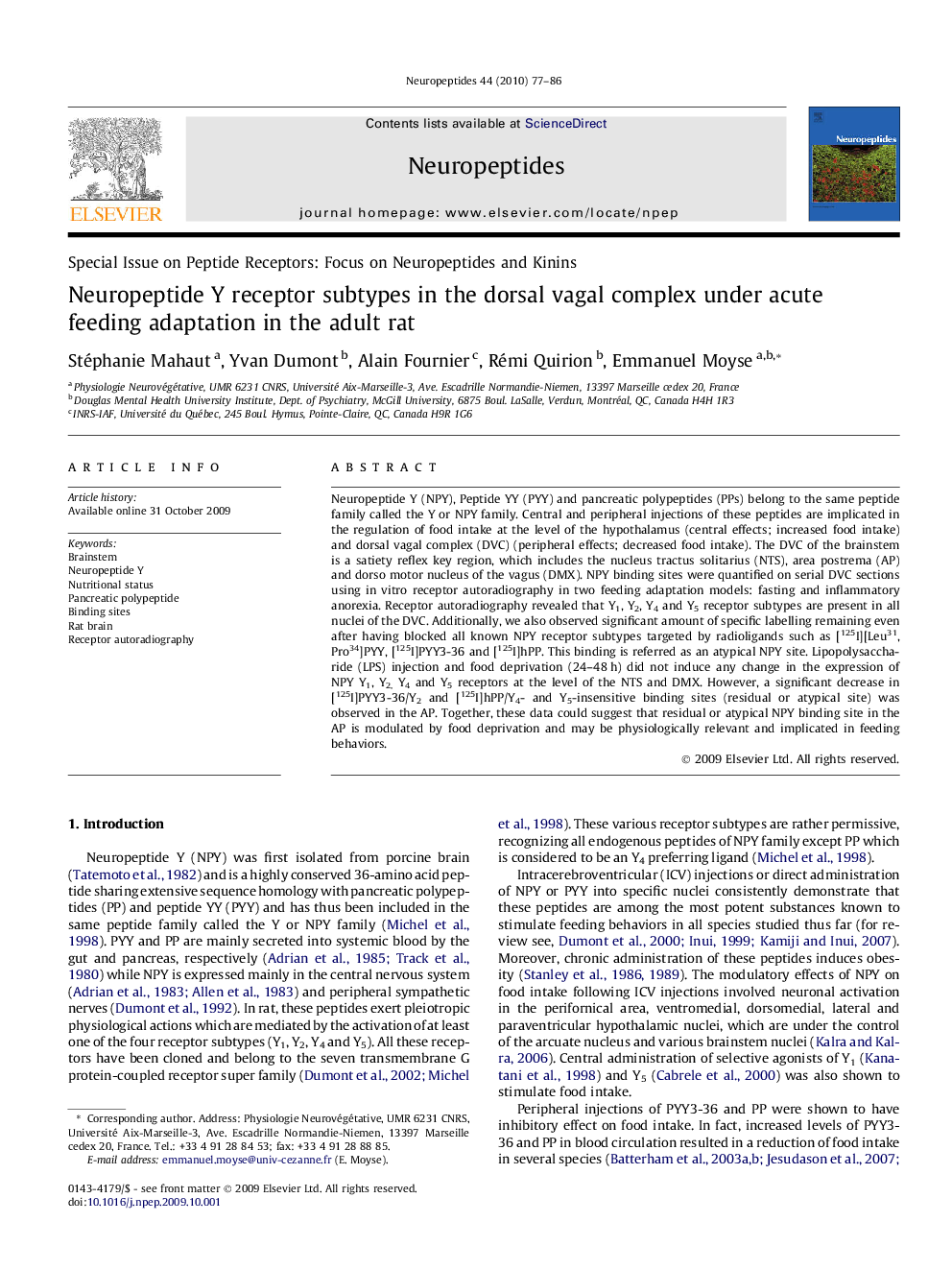| Article ID | Journal | Published Year | Pages | File Type |
|---|---|---|---|---|
| 2808230 | Neuropeptides | 2010 | 10 Pages |
Neuropeptide Y (NPY), Peptide YY (PYY) and pancreatic polypeptides (PPs) belong to the same peptide family called the Y or NPY family. Central and peripheral injections of these peptides are implicated in the regulation of food intake at the level of the hypothalamus (central effects; increased food intake) and dorsal vagal complex (DVC) (peripheral effects; decreased food intake). The DVC of the brainstem is a satiety reflex key region, which includes the nucleus tractus solitarius (NTS), area postrema (AP) and dorso motor nucleus of the vagus (DMX). NPY binding sites were quantified on serial DVC sections using in vitro receptor autoradiography in two feeding adaptation models: fasting and inflammatory anorexia. Receptor autoradiography revealed that Y1, Y2, Y4 and Y5 receptor subtypes are present in all nuclei of the DVC. Additionally, we also observed significant amount of specific labelling remaining even after having blocked all known NPY receptor subtypes targeted by radioligands such as [125I][Leu31, Pro34]PYY, [125I]PYY3-36 and [125I]hPP. This binding is referred as an atypical NPY site. Lipopolysaccharide (LPS) injection and food deprivation (24–48 h) did not induce any change in the expression of NPY Y1, Y2, Y4 and Y5 receptors at the level of the NTS and DMX. However, a significant decrease in [125I]PYY3-36/Y2 and [125I]hPP/Y4- and Y5-insensitive binding sites (residual or atypical site) was observed in the AP. Together, these data could suggest that residual or atypical NPY binding site in the AP is modulated by food deprivation and may be physiologically relevant and implicated in feeding behaviors.
